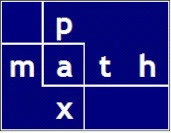Antarctica Shines
https://www.space.com/13881-an
I read the Antarctica article.
I have grave concerns about science activities.
Summarizing: Scientists will do anything anytime anywhere to justify their destructive existence.
These are the same people who brought you fracking, who have no idea what to do with plastic, or CO2, or nuclear waste, or space junk, who contrive to pervert agriculture into vast genetically modified monocultures: who just move on to their next self-inflicted disaster.
This article highlights the breadth and depth of my concern. At the least, an article written by a sane person, would have mentioned a few of the negatives of Antarctica research.
IceCube
The next link is about the so called ‘Ice Cube’ research. Especially start with the subheading ‘How big is IceCube?’ You will be crushed; you will cry.
https://icecube.wisc.edu/about
Looking back to the first USA satellite. 63 years later, Earth is littered with debris. https://en.wikipedia.org/wiki/Space_debris
https://celestrak.com/cesium/orbit-viz.php https://www.satview.org/?sat_id=25544U
Reference Information
(from https://www.nasa.gov/)
July 1950
A new chapter in space flight began in July 1950 with the launch of the first rocket from Cape Canaveral, Fla: the Bumper 2, an ambitious two-stage rocket program that topped a V-2 missile base with a Corporal rocket. The upper stage was able to reach then-record altitudes of almost 250 miles, higher than the International Space Station’s orbit.
Launched under the direction of the General Electric Company, Bumper 2 was used primarily for testing rocket systems and for research on the upper atmosphere. The rockets carried small payloads that allowed them to measure attributes including air temperature and cosmic ray impacts. Seven years later, the Soviet Union launched Sputnik I and Sputnik II, the first satellites into Earth orbit.
January 1958
Explorer 1 was the first satellite launched by the United States when it was sent into space on January 31, 1958. Following the launch of the Soviet Union’s Sputnik 1 on October 4, 1957, the U.S. Army Ballistic Missile Agency was directed to launch a satellite using its Jupiter C rocket developed under the direction of Dr. Wernher von Braun. The Jet Propulsion Laboratory received the assignment to design, build and operate the artificial satellite that would serve as the rocket’s payload. JPL completed this job in less than three months.




